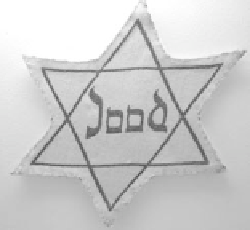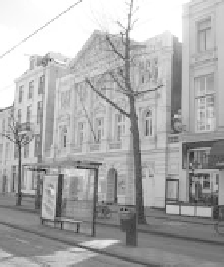Travel Reference
In-Depth Information
Jews in Amsterdam
In 1940, one in ten Amsterdammers was Jewish, and most
lived in the neighborhood behind Waterlooplein. Jewish
traders had long been welcome in
a city that cared more about busi-
ness than religion. In the late 1500s,
many Sephardic Jews from Spain
and Portugal immigrated, flee-
ing persecution. (The philosopher
Baruch Spinoza's ancestors were
among them.) In the 1630s, Yiddish-
speaking Eastern European Jews
(Ashkenazi) poured in. By 1700, the
Jewish Quarter was a bustling, exotic,
multicultural world, with more people
speaking Portuguese, German, and Yiddish than Dutch.
However, Jews were not first-class citizens. They needed
the city's permission to settle here, and they couldn't hold
public office (but then, neither could Catholics under Calvinist
rule). Still, the Jewish Quarter was not a ghetto (enforced
segregation), there were no special taxes, and cosmopolitan
Amsterdam was well-acquainted with all types of beliefs and
customs.
In 1796, Jews were given full citizenship. In exchange,
they were required to learn the Dutch language and submit
to the city's legal system...and the Jewish culture began
assimilating into the Dutch.
In 1940, Nazi Germany occupied the Netherlands. On
February 22, 1941, the Nazis began rounding up Jews and
shipping them to extermination camps in Eastern Europe. By
war's end, more than 100,000 of the city's 130,000 Jews had
died.
Today, about 25,000 Jews live in Amsterdam, and the
Jewish Quarter has blended with the modern city. For more
information on Amsterdam's many Jewish sights, see www
.jhm.nl.
for Nazi concentration camps. On
the wall, 6,700 family names pay
tribute to the 104,000 Jews deported
a nd k i l led by t he Nazis. Some
70,000 v ictims spent time here,
awaiting transfer to concentration
camps. Upstairs is a small history
exhibit with photos and memorabilia
of some victims, putting a human
face on the staggering numbers.
Television monitors show actual






















